| July 28, 2020 | Volume 16 Issue 28 |
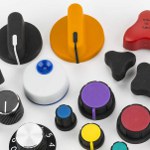 | Build-to-order knobs and hand hardware
Rogan Corp.'s innovative use of two-shot plastic injection and insert molding has been providing customers with high-quality plastic clamping knobs, levers, and control knobs for 80+ years. Rogan offers concurrent engineering, product design, and assistance in material selection to ensure customer satisfaction. Cost optimization and on-time delivery are hallmarks of Rogan service. Three levels of build-to-order parts offered: Standard, Modified, and Custom.
Learn more. |
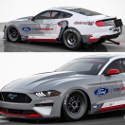 | Sneak Peek: Mustang Cobra Jet 1400 drag racer
Ford Performance, the automaker's motorsport and racing division, has taken the wraps off its one-off Mustang Cobra Jet factory drag racer with all-electric propulsion ahead of the vehicle's official world debut this summer. Details are slim, but the EV is the latest in a growing line of demo and real-world plug-in cars from the Pony car maker.
Read the full article. |
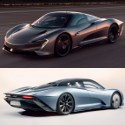 | 250-mph Speedtail is fastest McLaren road car ever
With a silhouette like something from a 1950s issue of Popular Mechanics, the new Speedtail is McLaren's fastest road car ever and its first Hyper-GT model. The 250-mph three-seater is way more than retro-futuristic chic, though. It provides a glimpse into the latest developments in lightweighting and hybrid-drive technology, featuring titanium woven into its carbon fiber, a Formula E-derived electric motor, and a special high-voltage battery design
Read the full article. |
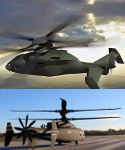 | Defiant attack helicopter proves it's faster than Black Hawk
On a recent flight test, Sikorsky-Boeing's new SB-1 Defiant attack and assault helicopter proved it was faster than the legendary Black Hawk by reaching 205 knots -- and the compound coaxial copter is designed to go much faster. Defiant is one of two designs in the running for the Army's Future Long-Range Assault Aircraft (FLRAA) competition. This article also contains a new update on the Army's Future Attack Reconnaissance Aircraft (FARA) competition.
Read the full article. |
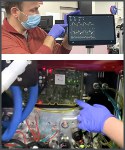 | Tesla demos ventilator design that uses car parts
On April 5, Tesla showed the world the first prototype of the ventilator design it's working on to help with the shortage of medical equipment in the fight against COVID-19. Tesla engineering used several parts from its electric car lineup to create the artificial breathing device, including the Model 3 infotainment computer system and screen, the air mixing chamber, sensors, and vehicle controllers. The Tesla system is portable and even comes with an extra battery and O2 backup that lasts for 20 to 40 minutes.
View the video. |
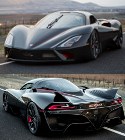 | Shooting for 300+ mph: SSC North America Tuatara
SSC North America, the only supercar manufacturer in the United States, is aiming to capture the world speed record for a production car with its new 1,350-hp (1,750-hp using E85) Tuatara model, which combines high-end engine tech with funky aerodynamics to rocket the driver forward. It sports multiple fins and quirky design features, just like its namesake "living fossil" New Zealand lizard, but that's what makes it intriguing.
Read the full article. |
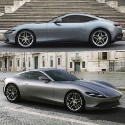 | Ferrari Roma: A taste of the sweet life
Ahh, the sweet life. Do you remember that, before things got so challenging? Ferrari still has that spirit and has channeled it into its new sleek and sultry Roma coupe. The 611-hp turbo V8 is simply stunning -- like someone in a 1960s spy movie got a glimpse of the future and related instantly. The Roma pays homage to a bygone era but also reminds us that "la dolce vida" is still here in modern times -- if we just take a moment to savor it.
Read the full article. |
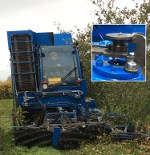 | Top Application Note: Why apple harvesters need angle sensors
The SFM Samurai is a self-propelled apple harvester that can collect a whopping 100 tons of apples each day. The machine is designed for optimal navigation through the narrowest of orchard rows thanks to its SFM-developed four-wheel steering system that relies on Novotechnik RFC4800 series angle sensors to monitor each axle position.
Read the full article. |
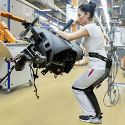 | Top Motors: Chairless exoskeleton solves long-standing problem
The Chairless Chair is a new innovation for relieving strain and fatigue from excessive standing during long work shifts. The entire construct is lightweight, easy to put on, and hardly noticeable when walking. Operating a switch on the strap turns the flexible construct into a stable seat. Two small FAULHABER DC motors activate a stop valve in the hydraulic elements of the shock absorbers, locking the support into the seated position.
Read the full article. |
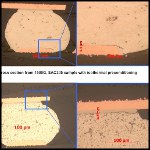 | Top Fastening: Top 5 reasons for solder joint failure
Solder joint reliability is often a pain point in the design of an electronic system. According to Tyler Ferris at ANSYS, a wide variety of factors affect solder joint reliability, and any one of them can drastically reduce joint lifetime. Properly identifying and mitigating potential causes of solder joint failure during the design and manufacturing process can prevent costly and difficult-to-solve problems later in a product lifecycle.
Read this informative ANSYS blog. |
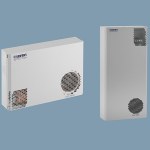 | Top Product: New skinny enclosure air conditioners
Seifert Systems has just introduced the SoliTherm SlimLine Series of enclosure air conditioners that have an inside-cabinet depth of only 3.5 in. and are 4.5-in. deep overall. The SlimLine Series has a condenser specifically designed to maintain performance without maintenance -- even in environments where dust and dirt are present. Models are available with steel covers and external or recessed mounting. The line provides cooling capacities from 1,130 to 5,120 BTU/hr. Operating temperature range is 50 F to 122 F or 131 F -- depending on model. Eight SlimLine models available.
Learn more. |
 | Top Product: $100 LiDAR sensor delivers small size, big safety
Velodyne has just released Velabit, the company's smallest 3D LiDAR sensor. The sensor delivers the same technology and performance found on Velodyne's full suite of state-of-the-art sensors and can be embedded almost anywhere within vehicles, robots, unmanned aerial vehicles (UAVs), infrastructure, and more. It has been engineered to be an optimal automotive-grade LiDAR solution for Advanced Driver Assistance Systems (ADAS) and autonomous vehicles. Highly configurable for customer application, this mid-range sensor can be combined with other Velodyne LiDAR sensors, such as the Velarray, for high-speed operation, or it can function as a standalone LiDAR solution in low-speed applications. Range is up to 100 m.
Learn more. |
| | Most popular last issue |
 | Top Motion Control: 50 ways to use a hexapod
Hexapods, six-legged parallel-kinematic machines, can solve many complex positioning and alignment tasks in fields including Optics, Photonics, Precision Automation, Automotive, and Medical Engineering. Features include a programmable pivot point, sub-micron precision, and load capacities from 2 kg to 2,000 kg. From drone testing to the largest telescope project in the world, PI (Physik Instrumente) shares a full complement of applications to inform and inspire.
Learn more. |
|
| | Videos+: Technologies and inspiration in action | See SpaceX rocket explode -- on purpose
SpaceX conducted an exciting test Jan. 19 of the Crew Dragon spacecraft's emergency abort system. Launched atop a Falcon 9 rocket from Kennedy Space Center's Launch Pad 39-A, the unmanned Crew Dragon capsule rose through the atmosphere for 84 sec before the abort was triggered, the rocket engines were shut down, and the Falcon 9 booster was deliberately exploded. The Crew Dragon capsule has eight SuperDraco engines embedded in its hull that activate to push the vehicle away from the rocket if there is an in-flight emergency. It all worked as planned, and the capsule successfully descended to a parachute-assisted splashdown about 9 min. after liftoff some 32 km off the Florida coast. If you just want to zoom to the explosion, fast forward to the launch about 18 minutes in. Crew Dragon is the spacecraft that eventually took astronauts to the International Space Station at the end of May this year.
View the video. |
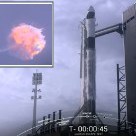 |
Apollo 13 views of the Moon in 4K
A new video from NASA Goddard uses data gathered from the Lunar Reconnaissance Orbiter spacecraft to recreate some of the stunning views of the Moon that the Apollo 13 astronauts saw on their perilous journey around the far side in 1970. These visualizations, in 4K resolution, depict many different views of the lunar surface, starting with earthset and sunrise and concluding with the time Apollo 13 reestablished radio contact with Mission Control. Also depicted is the path of the free return trajectory around the Moon, and a continuous view of the Moon throughout that path. All views have been sped up -- they are not shown in real time. Impressive in detail.
View the video. |
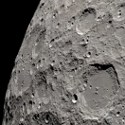 |
How a Bentley is made
Take a look inside the Bentley factory in Crewe, England, thanks to this video from GommeBlog.it: Car & Performance. You get to see the facility in motion when it's busy creating the Mulsanne, Mulsanne Speed, and Mulsanne Extended Wheelbase models. It takes a lot of craftsmanship to bring this kind of quality to the road. There is no narration, but it is fun to figure out what's happening.
View the video. |
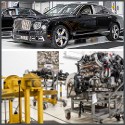 |
|
|